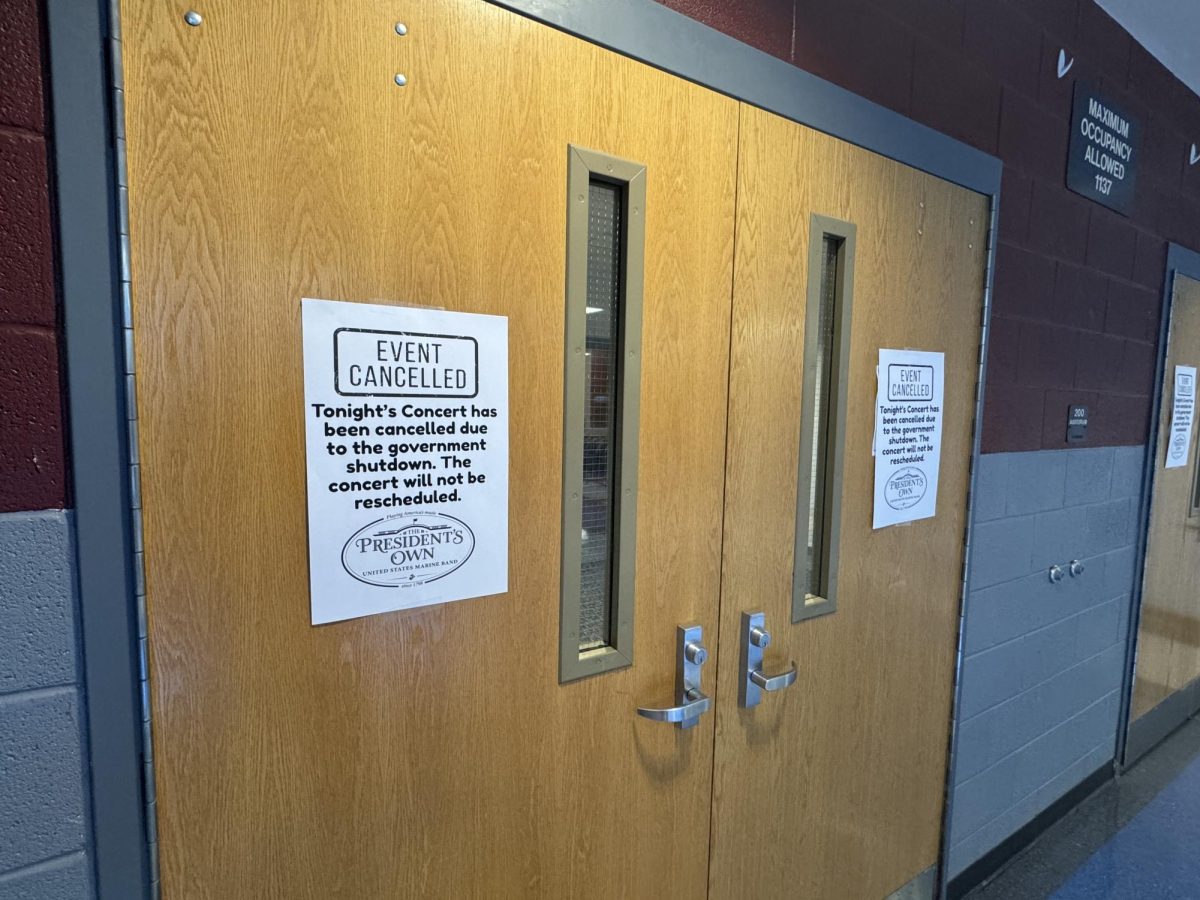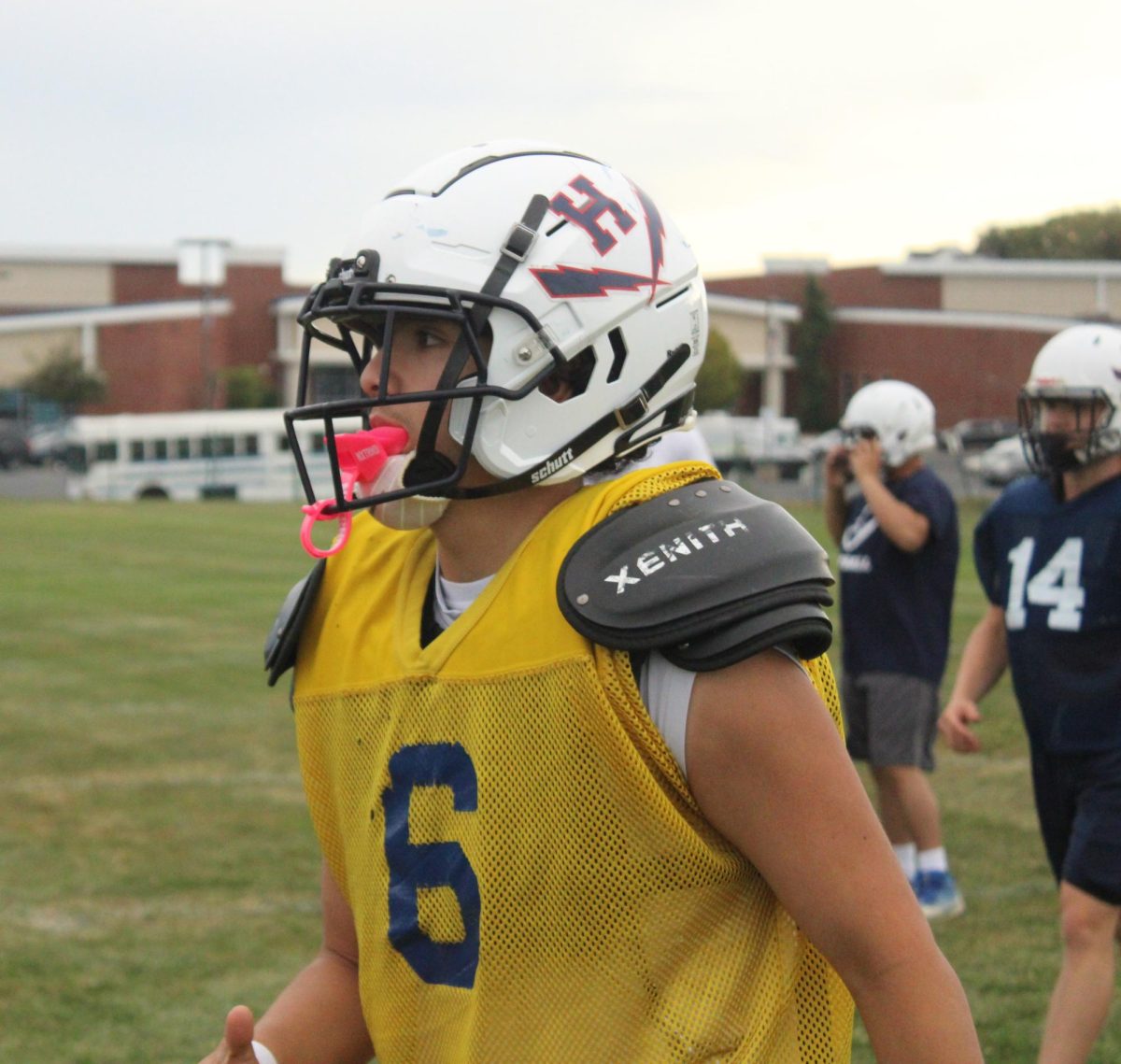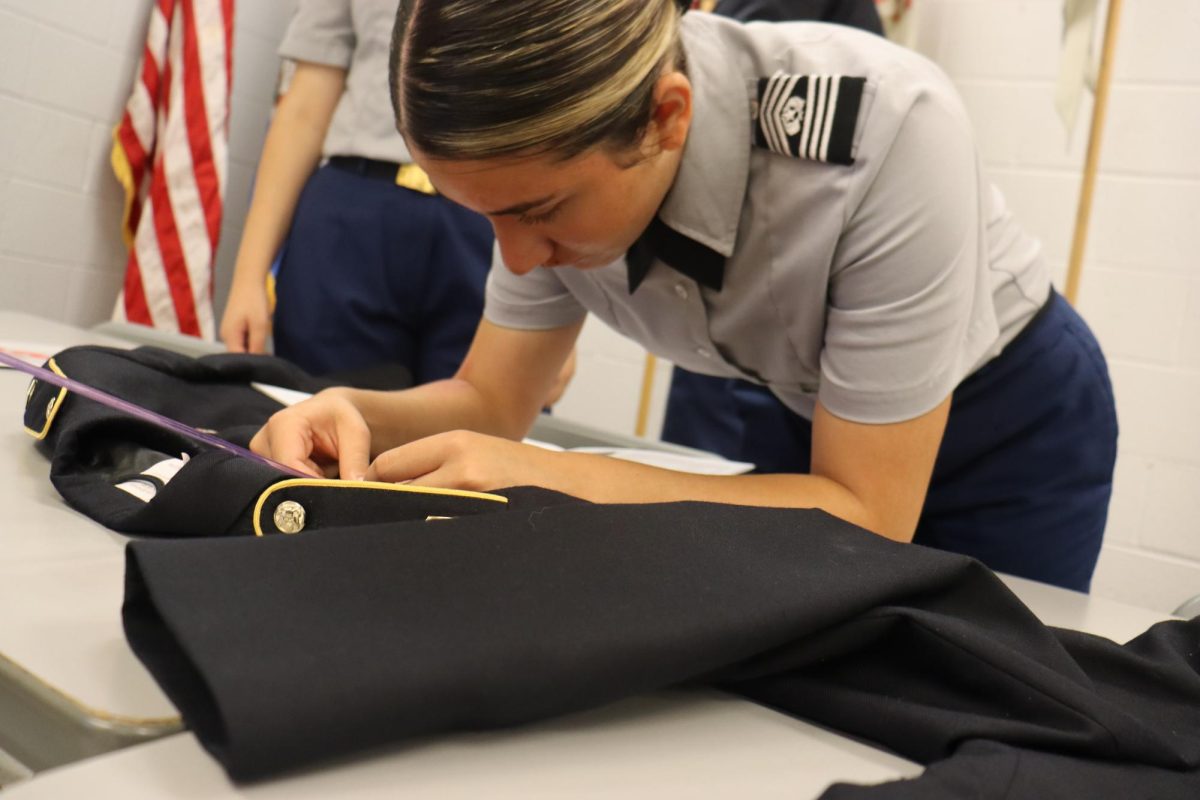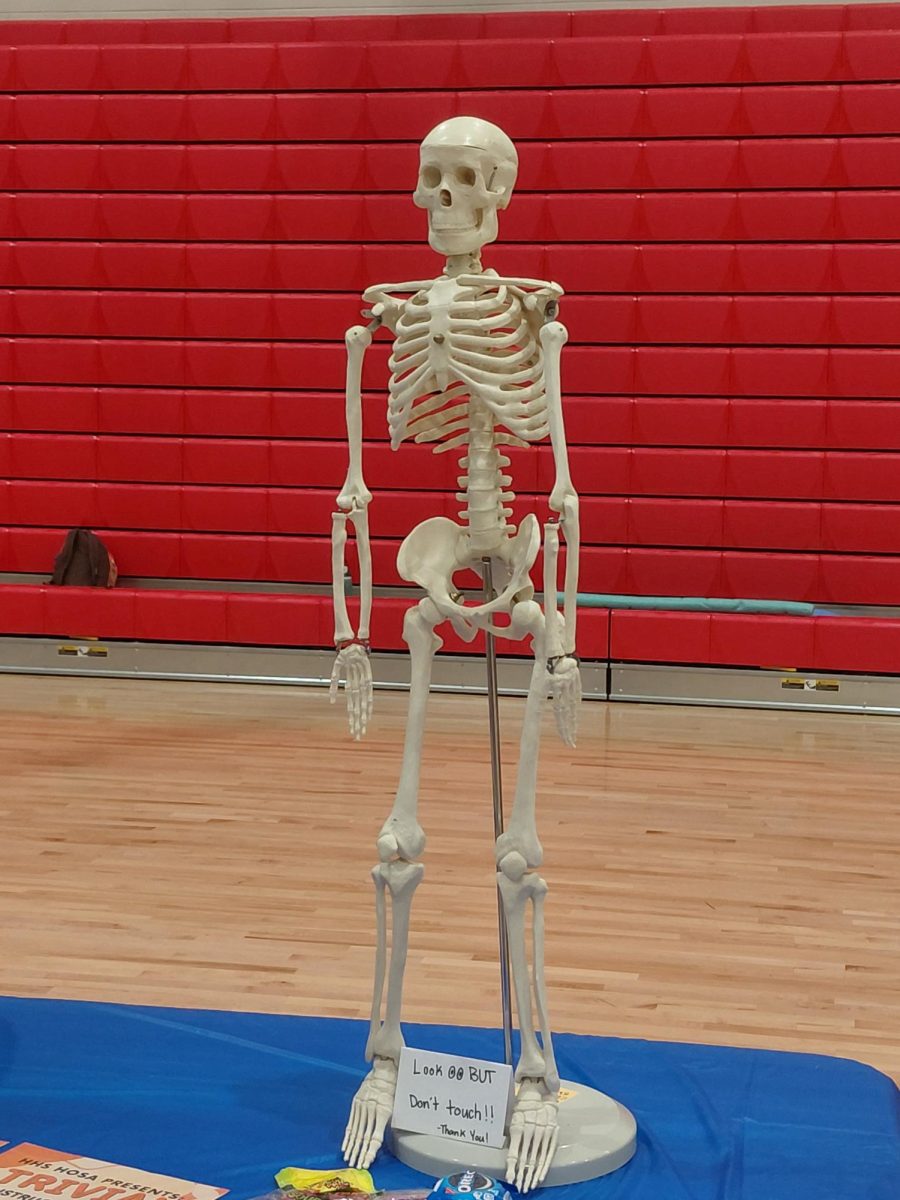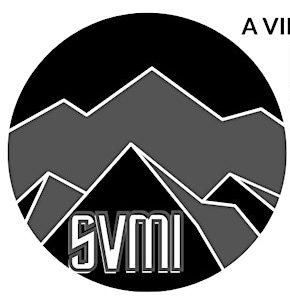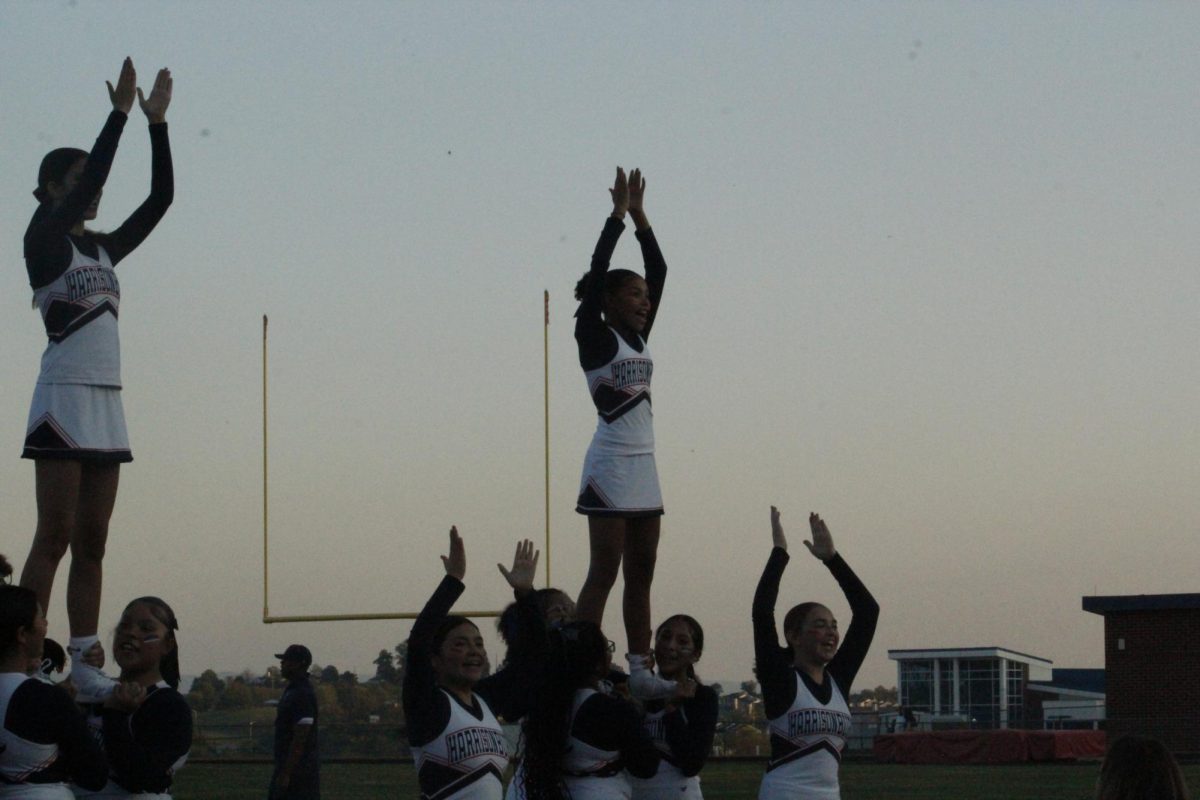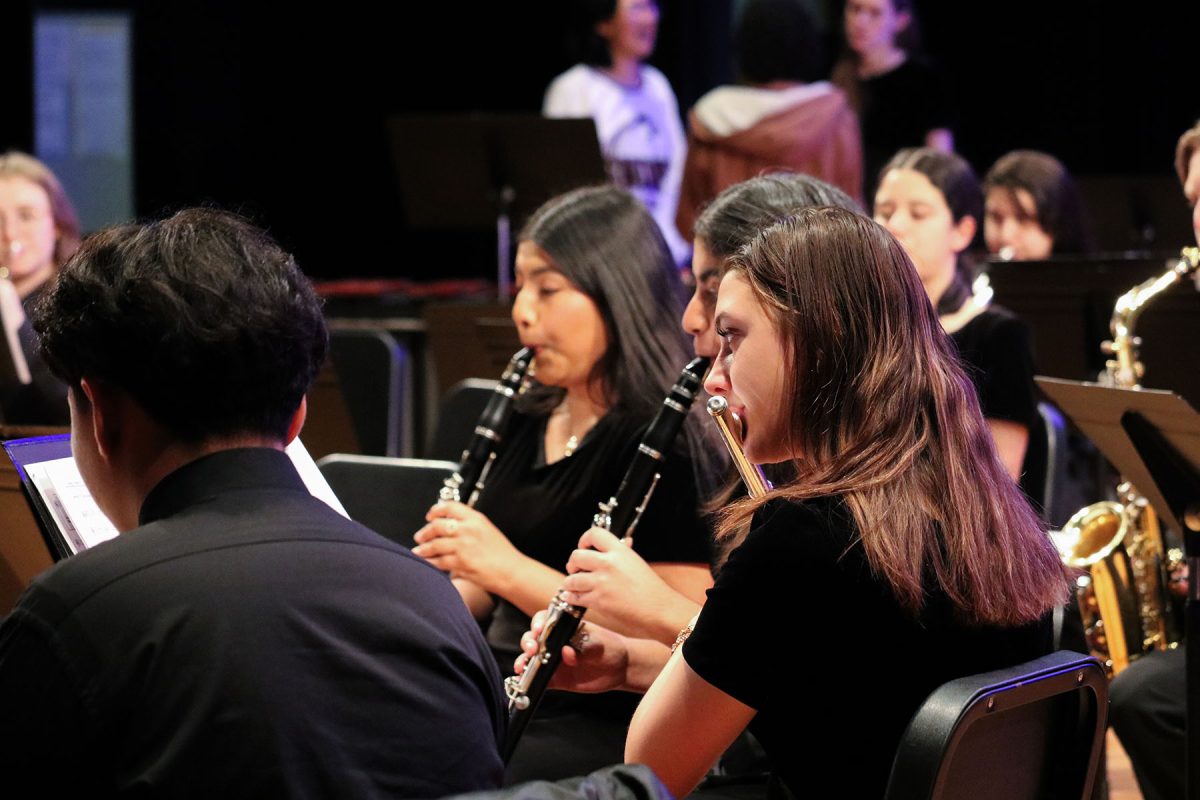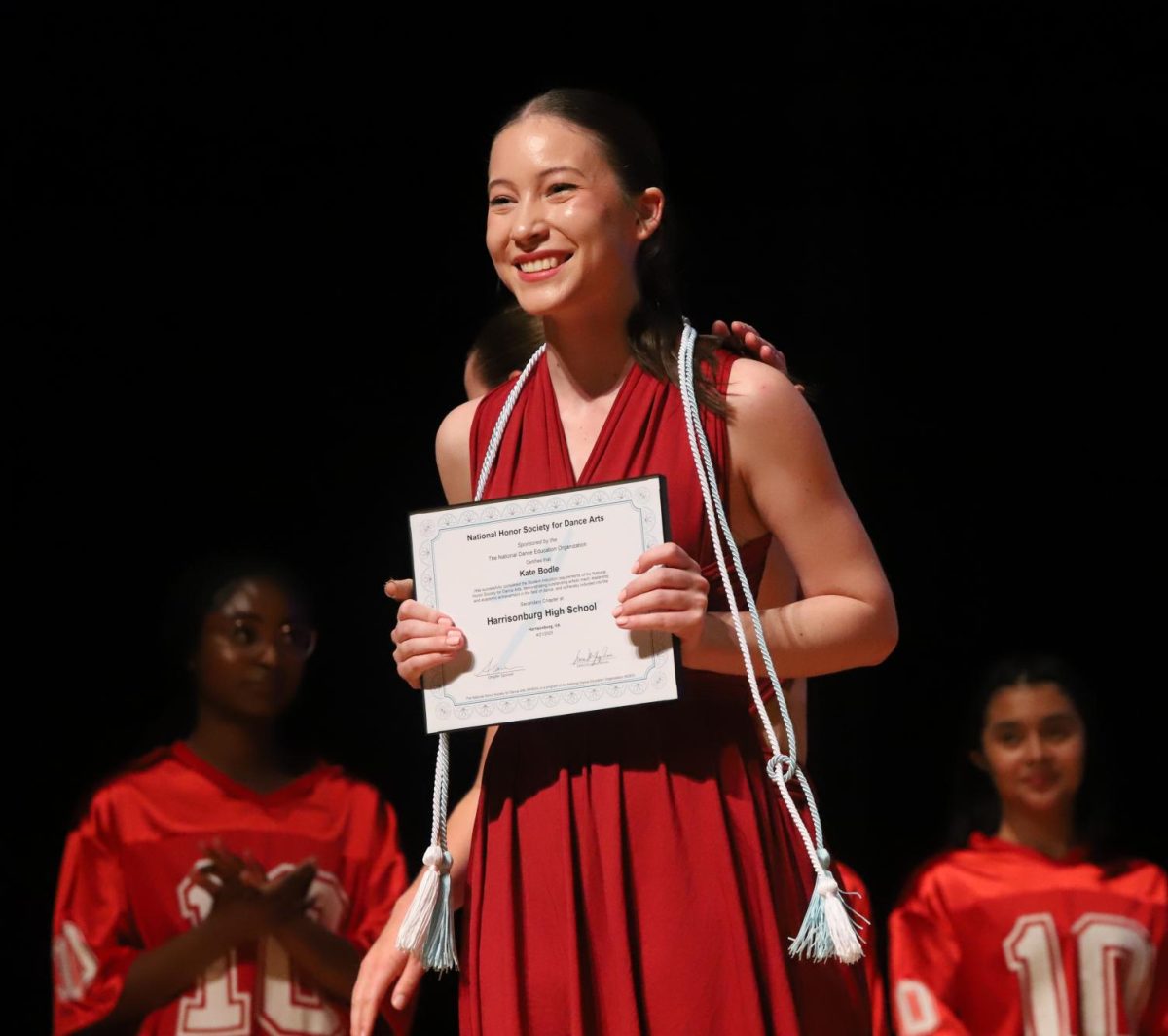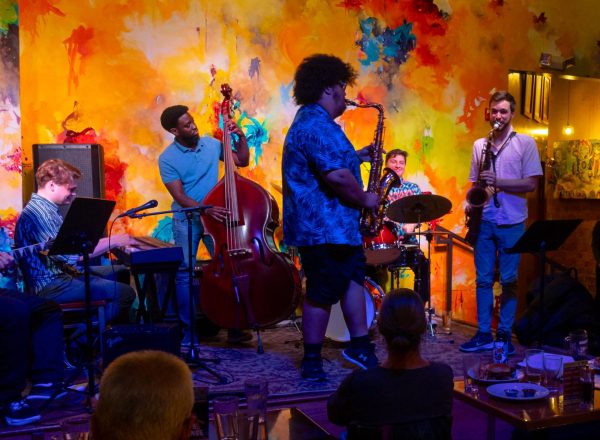
Clementine Cafe offers their customers anything they desire from an American restaurant: breakfast, lunch, dinner and live music. Among the clinking glasses sits a teenage boy watching the 5-person jazz band. Among the chatter sits the boy, seated alone at a table for two. Among the feelings of awe within him sits awkwardness, an uncomfortable awareness of his darker skin and afro standing out from the people around him. Nobody knows him, but it seems, everybody notices him.
“It’s definitely almost kind of awkward when I go in there, and it’s, well, it’s a bar with table seating for people who want to eat there. It’s kind of awkward for me to go in there, first of all, as a high school student, but also, an African American with kind of crazy-looking hair,” he said. “Everybody who’s playing is white. Everybody who’s everybody who’s sitting around me is white, everybody running the bar run and everything else white.”
When playing to a live audience, the notes leaving the instruments fills the area between the player and the listener. An energy fills the musician that keeps the fingers moving and the music playing out. There’s no room for self-doubt and no time for awkwardness.
“Once you kind of get roped into playing music live, you get sucked out of being an audience member. Being an audience member, like myself, in Clementines and a scenario like that, for me, because I’m not necessarily a socially outgoing person all the time. I’m also just not your average white guy, but as soon as like I went up on stage, it was like, ‘Alright, well, call the chart. ‘Tenor Madness’. All right, well, let’s count it off. The audience turns out to be almost irrelevant. Playing, as long as you know the chart and as long as you can play a solo. I mean, I probably sounded like trash, but just the overall energy that was going on.”
It was his first and only time playing at Clementines Cafe, reaching a large milestone in his musical journey. He played with band members Noah Galbreth and Doug Ritchers. In ‘Tenor Madness’, he had a solo with Galbreth where the two traded chords for four bars before returning to the head, the main theme of the song.
“That’s, that’s one thing that I love, you know, jazz is that it’s so improvisational, and get also so kind of structured to where it’s like there’s enough structure to where you have to know what you’re doing. But it’s loose enough to where you can connect with other musicians.”
At Clementines Cafe, he played the alto saxophone. But that isn’t his first instrument. He started off with the guitar, picked the banjo before laying down keys on the keyboard and ended up in the Blue Streak Bands playing the bari, tenor and alto saxophone. Junior Isaiah Moats is a lifelong musician.
“For me, it was always rock and roll, blues, jazz, all that stuff,” Moats said.
When listening to music, Moats distinguishes between playing the notes of Black and African American-influenced music and performing the music.
“A lot of people focus a lot more on sounding good in the context of a live situation or on a recording. It’s one thing to sound good, but it’s another thing to sound good and hold meaning,” Moats said. “It’s finding the fine line between good and great and that sort of fine line is kind of where you find the people that are like, ‘Yeah, I love playing this music or this certain genre of music’…You can understand not just the language used within that solo, but you understand context and you can go and start referencing certain things which when it comes to jazz, referencing yourself, and also other music.”
To pass the fine line of becoming a “great player”, Moats believes musicians need to dedicate time to not only practice the music but to understand the culture from where it came. In jazz, The Lick is commonly referenced and used as a chord transition.
“Everybody seems to cringe at it, when, in reality, the lick was just a way to move between a 2-5-1 pattern when it comes to the chords. You can play the lick, and it’ll work in context, but it’s another thing to be able to solo and be able to reference certain people like John Coltrane or Miles Davis. Then, your solo can be very specific connections like that as compared to being like, I can throw the Mario Kart and you can also throw Coltrane playing over some kind of blues. It’s very much not a diamond in the rough, but it takes somebody who’s been around the music long enough to understand and conceptualize what they’re playing,” Moats said.

Harrisonburg is bustling with music. Blues, jazz and other African American-influenced music are often played in downtown Harrisonburg even though only 7.49% of Harrisonburg’s population is Black or African American.
“The cool thing about Harrisonburg though is that you have all these cultural groups and racial groups, but they all work together in some cases, and they all have their own things going on. You got the Spanish and Latinos, they got their own things going on. They got Cuban stuff, they got Spanish music, they got Mexican music, and that’s pretty fun to play,” Moats said. “But you have a couple white people, they can cover pretty much any bases that they really want. To be fair, like I’ve seen great, you know, white musicians in Harrisonburg be able to cover pretty much anything from like, straight-up Mexican folk music all the way up to like, like very black jazz and blues stuff. And so it’s being able to, you know, find the great people. Those people know what they’re doing and they have taken their time to look into the music that they’re playing. And it’s not just their reading off a piece of paper or something like that. It’s more they understand the context and the culture behind music. So it’s,
Moats relates to musicians regardless of skin color. Despite being a more reserved person, Moats are happy to discuss music with anyone open to conversation.
“It’s really any connection, because all musicians can connect. If you have two people that are playing and they both enjoy making music, those two people are going to connect,” Moats said.
Moats appreciates the rise in popularity of Black and African American music and utilizes this rise to connect with other musicians. However, Moats struggles to find African Americans to listen to.
“Harrisonburg, our music scene, for the size of a town that we are, is incredibly diverse. But I will put a pause on that. Because while we are incredibly diverse, music genre-wise, like we got great jazz musicians coming out of JMU, [James Madison University]. We got great folk musicians, great bluegrass musicians, great rock people. Great, great. All that’s great. One thing is that almost anytime I go to see groups, it feels like it’s very predominantly White, and that’s not necessarily a negative thing, especially when it comes to things like bluegrass, where that’s very much not an African American music genre,” Moats said. “It almost becomes a continuing pattern, where it’s like, ‘Alright, let’s go down and see JMU jazz combos in Clementine on a Thursday’, and it’s like, ‘Well, these are all great musicians, and they’re all people that are working towards a goal of becoming better musicians, but it’s like, ‘Damn, there is hardly any people that I can really connect with’.”
Although Moats appreciates the value for music in Harrisonburg, he also recognizes the difficulty it brings for musicians as they compete for a second on the stage. Becoming a musician takes time and dedication. Moats is deciding whether he wants to find a career in music.
“it’s been an uphill battle of, well, you got to audition for any real college that you want to go to for music, hope that you get into the college when you got to go audition, which is already stressful process. To prepare yourself for doing that, you gotta go hire, one-on-one mentor to prep yourself. For me, it’s like I’ve met a couple people that said they’d be down to be like a sax teacher, but being able to like find a time in my schedule but also have the money to do that. It’s also kind of not the easiest thing in the world, so it’s finding my way to getting to a place where I feel comfortable saying that I really want to go to music school for music. Then even then with that, if I go to school for music, what will I do when I get out of school? Being a professional musician does not make nearly enough money in this day and age for what it should be, especially when you’re in a kind of a saturated market, like Arizona, like our market is not very big for musicians, like as professional musicians, and at the same time it’s also pretty saturated because you got three colleges in the area pumping out musicians left and right,” Moats said.




